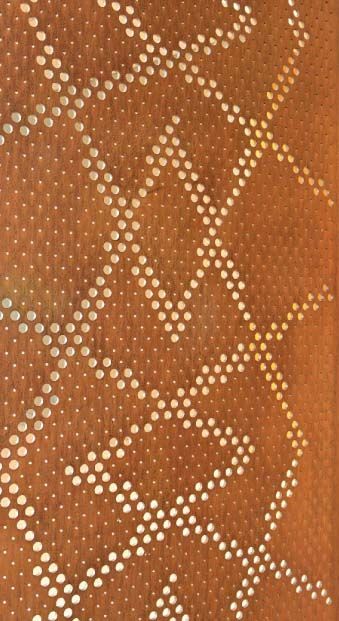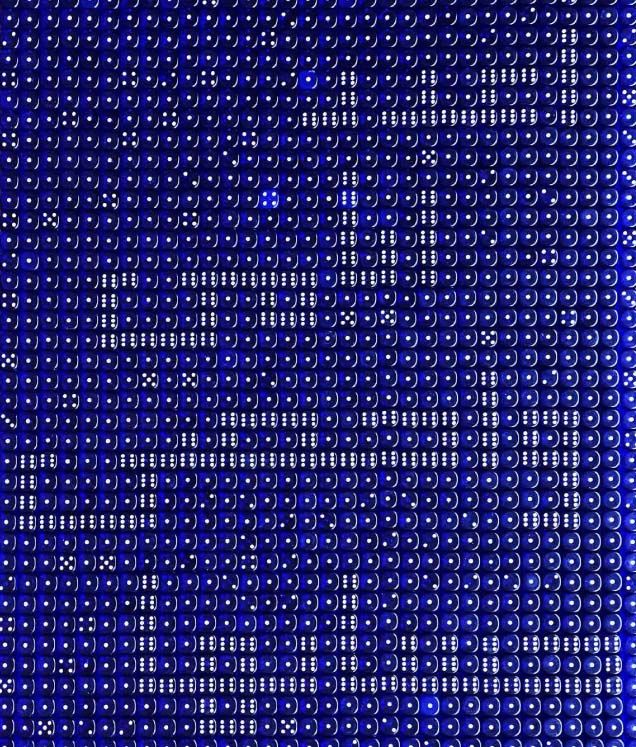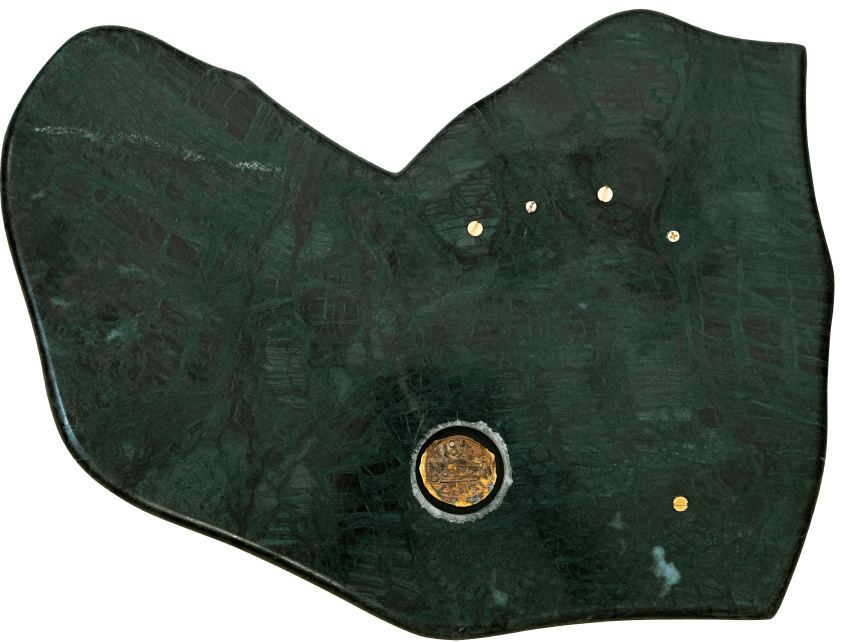The Seven Gates
Gate One: Petroglyphs
The number seven represents Well No. 7 (Prosperity Well), which was the first well in Saudi Arabia to produce oil in commercial quantities. These gates were designed to reflect the history of the Arabian Peninsula through artistically engraved designs.
Some of the earliest evidence of human presence is through petroglyph rock carvings dating back 15,000 to 20,000 years. The artwork pattern on this gate is a contemporary interpretation of these Petroglyphs.
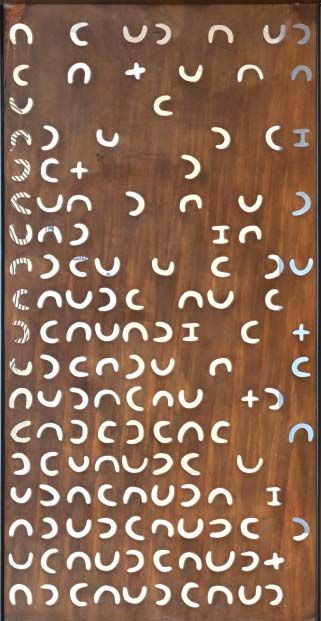
As the climate changed, scrubland gave way to desert, and tribes were forced into the hills where the needfor survival resulted in agricultural systems being developed. The artwork pattern on gate 2 takes inspiration from crops which would have been planted at this time.
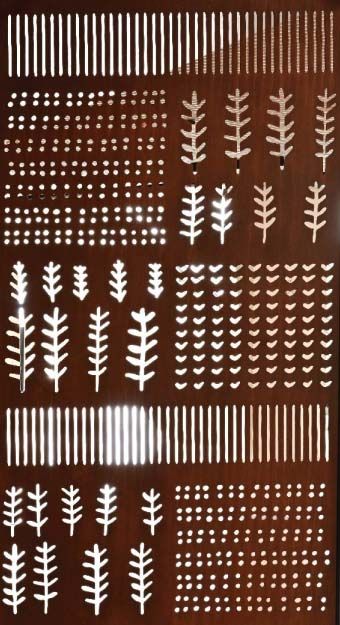
As settlements became permanent, the foundations of civilization began to emerge – language, writing, political systems, art, and architecture. One of the most iconic forms of early architecture are those constructed of dried mudbrick. The artistic pattern for gate 3 is an interpretation of the windows of these buildings

The Arabian Peninsula became a cross road for trade routes like the spice and incense routes. Caravans which traveled through these routes with camels transported highly, sought after goods such as almonds, dates, and aromatics such as Frankincense and myrrh. The crossing artwork pattern for gate 4 represents the crossing pathways of traders and travelers.
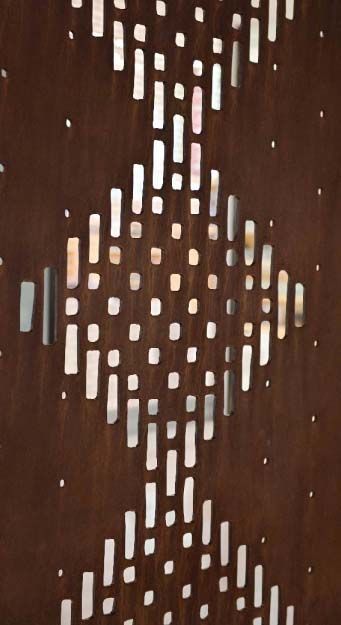
The Islamic art is distinguished by the geometrical complex shapes that results in unique designs. The artistic pattern on gate 5 is a contemporary interpretation of the geometric pattern found in Islamic art.
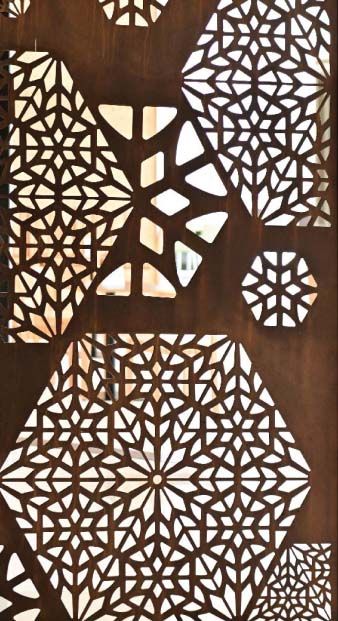
The Islamic faith flourished and spread to parts of Spain, China and India and pilgrims to Makkah exchanged their culture and knowledge during an era known as the Golden Age. During this era, the Muslim world became a center for learning and scientific advancement. The artwork pattern on gate 6, takes inspiration from some of these mathematic and scientific diagrams of this era.
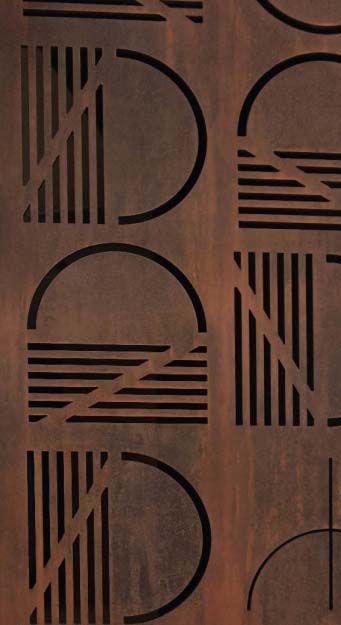
The first and second Saudi states in the 18th and 19th centuries paved the way for the modern Kingdom of Saudi Arabia named in 1932. Oil was discovered in commercial quantities in 1938 from Well No. 7 (Prosperity Well). The pattern for this, the 7th gate, reflects the continuation of culture in a modern society. An Islamic inspired pattern shows rhythm and geometry reflected in a contemporary and industrial way.
